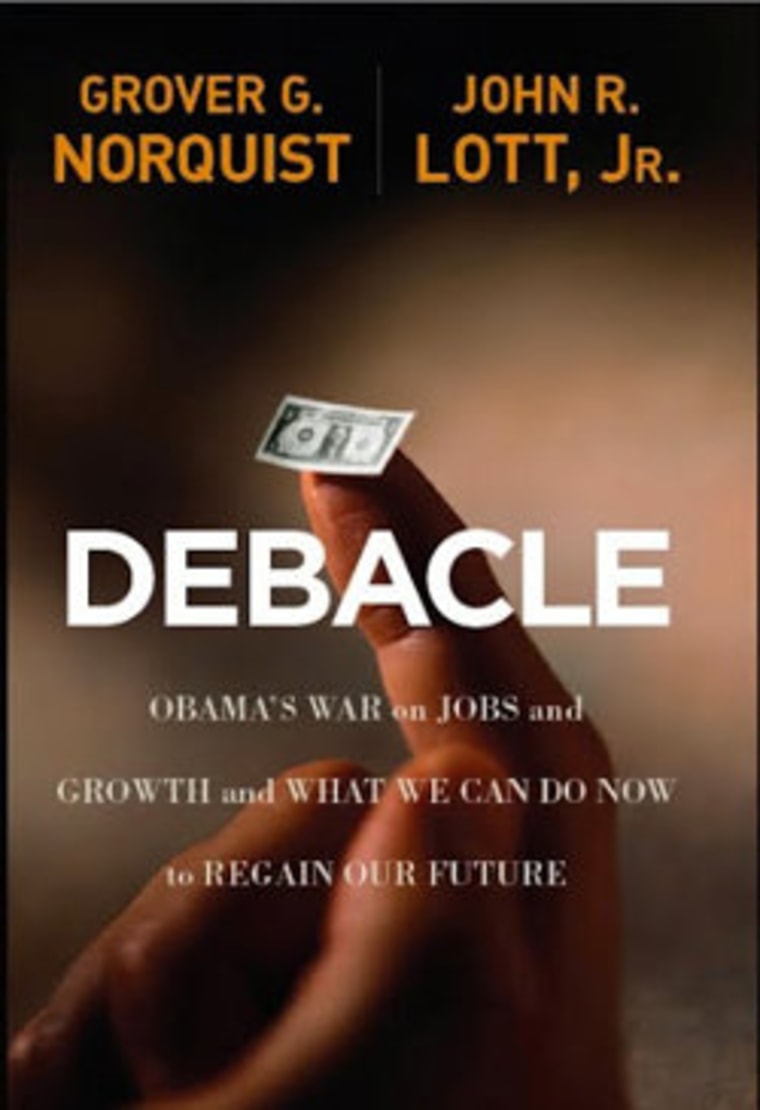Chapter 6: we have seen what happened under Obama. So now what do we do?
The simple answer is for the government to spend less, tax less, borrow less, and regulate less. But that advice is a little like answering the question, “And how do you get from Pakistan to China” with the simple, direct, and accurate answer, “Cross the Himalayas!” There is a little more to it than that.
Americans who want to restore American economic might to where we are creating millions of new jobs each year, growing our economy faster than Europe, indeed faster than China each and every year, and increasing the standard of living for every American year after year have a clear but difficult path before us.
Our own history and common sense show us what can be done. We have done it before. We know from painful recent experience what not to do. We also know that there are forces and special spending interests that profit from the present troubles.
Get more book excerpts on the Morning Joe blog
The challenge is to do three things at the same time year after year: grow the economy, reduce the size and scope of the government, and do so in a way that you can confidently explain your goals, plans, and successes to the American people clearly enough to win elections every two years. Reform government, create economic growth, and win the election. Repeat again and again until we have restored American unchallenged economic preeminence. It is no good to have the perfect plan if you cannot explain it to the nation. Successful businessmen remember that the customer is always right. The customer has the dollar and if you wish to earn it you have to satisfy his or her concerns. It is not enough for you to believe in your product. You have to convince the customer that he wants, he needs, your product. And your product has to be good. It has to perform as advertised. Retail stores have a no-questions-asked return policy for their merchandise. In politics, the return policy is that if the customer is not happy with how you have governed, they return you to the private sector. In governing a free society, national leaders must earn the opportunity to govern every two years at election time. The voter is always right in the sense that she has her vote and you had better be able to explain why you deserve her vote.
Every two years, we must speak clearly to the American people and ask permission to continue on the path to limited government, which we believe goes hand in hand with jobs, higher wages, and overall economic growth.
Both citizens and elected officials determined to execute a U-turn on the road to serfdom and keep America on the right path for generations to come need bifocal vision. They need the ability to see the distant future, the perfect policy goal, and to articulate that goal so that a majority of Americans also see it, understand it, and want to move in that direction. But while describing the “shining city on the hill” is inspirational and necessary, the hard work of moving a deliberately unwieldy national government over time to achieve that goal is more perspiration. That is where we need to look down at the political world right before us so that while we move to the distant goal we don’t put our feet down wrong and falter. Bifocal vision forces us to keep one eye on the ultimate goal and the other focused on the day-to-day politics of change.
If we set a goal of reducing the top income tax rate any American is forced to pay to Washington to 10 percent, there will be years and perhaps decades while we first must make the case for avoiding Obama’s goal of increasing the top rate to 50 percent and then arguing for dropping the rate to 25 percent and then 20 percent and then lower.
This is not an easy task. Elections are often about unfurling banners of bold colors and demands for radical change, while governing is (when we are in charge) too often about “three yards and a cloud of dust.”
Leading a successful movement to liberty demands that leaders manage expectations at the same time they inspire and encourage all Americans to insist on reaching for the stars. If this were easy, someone would have done it already.
How do we restore constitutionally limited government and make America the most powerful economic engine in the world again—creating jobs, opportunity, wealth, and higher income faster than all the other nations of the world?
If this were a novel, we would flip forward to the last chapters of Atlas Shrugged, where the politicians who had screwed up the economy with taxes and regulations and spending hand the decisions over to John Galt, who, by fiat, removed the layers of excess government to free up the economy. If we were in Plato’s Republic, the philosopher-king could undo the bad laws and regulations of previous kings and, voilà: freedom.
But America is a constitutional republic, with elected representatives chosen in democratic elections. How to get from here to greater freedom is a two-part question. First, what is our destination, and second, how do we win enough elections decisively enough, over a long enough period, to turn around and bring under control the overgrown government that now makes us poorer by reducing liberty when it was created to allow us to achieve prosperity by establishing and protecting liberty?
